
FEATURE STORY – By Deanna Gokhman and Aaron Alspach
Engaging learners and delivering training in a fun, memorable way
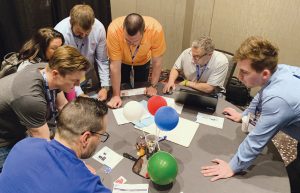
Beginning moments as a team begins to look at their first clues and activities in the Escape Room. Most of the clues are still uncovered (balloons with resources still inflated).
It all started innocently enough. The Olympus Urology marketing group had invited the training team along to participate in a team-building event just a few miles away from our office. Because we are super close to our marketing team, and we try to collaborate with them as much as possible, we gladly accepted! (The free lunch and time away from the office didn’t hurt either.)
That day, my friends, would be the first time we were introducted to that seductive, saucy mistress – the escape room.
This particular room was called the “Museum Heist,” where the goal was to find a fictional collection of stolen artwork by gathering clues and solving mini-games within an hour. Entering the room, we noticed little things out of place, such as locks in random locations, maps, pictures and riddles. Six of us in a tiny little room, laughing until we were crying, all trying to figure out how the heck we were going to do this before time ran out. Every time we solved one puzzle, we would get a rush of excitement, only to find more hints toward other puzzles.
The teamwork and collaboration was amazing though. We were patting each other on the back, cheering for one another and overall feeling pretty dawn good about ourselves.
Then it happened. At the five-minute mark, things got real. The competitive juices really started flowing, and hilarity ensued. We started moving at Mach speed, throwing things around the room, finding solutions, all while screaming and flipping out, yelling “GO GO GO!!!”
And with just nine seconds left on the clock, we miraculously rallied, entered in the final code to a keypad that was mounted to the wall, and the door where we entered just 59 minutes ago, lit up with glorious, triumphant, blue LED flashing lights!
We were hooked.
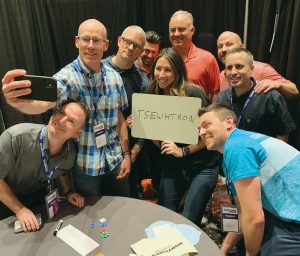
Using a lot of creativity and sprinkling in common things like a team selfie provide fun and simple tasks that can round out the game play. Team Northwest is seen taking a selfie with their name spelled backwards to complete one of the kits.
Incorporating Into Training
For the next three years, every time we had an in-house training event, like a couple of addicts, we would beg everyone to come out and join us in an escape room. The training team, regional vice presidents, field trainers, trainees – no one was safe.
Then one day it hit us: Why are we not incorporating this into our training program??
Cut to the 2022 Olympus national sales meeting. It had been almost three years since the last time our entire sales force was able to get together in person. The Urology/Gynecology training team is well known at Olympus for their national sales meeting team-building shenanigans, and this year, we started to throw around the idea of creating an escape room that was sure to blow their minds.
Little did we know just how much goes in to creating one. The fact that we have a very large bag of products was just the least of our problems, as we also had to figure out how we were going to roll this out to 175 people simultaneously! Two solid months of planning allowed us to set up storylines, create mini-games and tie everything back to learning opportunities.
Here’s an overview of what we came up with.
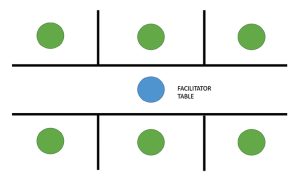 Room Setup:
Room Setup:
- 175 people were split into three separate conference rooms by region. Each region was a team.
- Each team had their own “escape room” area, containing a round table and separated by large curtains.
- Within each area were items such as a dry erase board, posters and ciphers pinned to the curtains, plastic eggs filled with mysterious hints, a balloon centerpiece, strategic product brochures and a locked pouch that would help get them through upcoming tasks.
- Facilitators were also placed in the center of the room to help moderate. (Figure 1)
Basic Rules:
Rules were reviewed immediately prior to entering the escape rooms and included items such as:
- Do not wander into another team’s escape area.
- Winner is chosen based on time (who can escape the fastest).
- Hints are provided upon request, but all team members must agree to the request, as each hint results in a three-minute time penalty.
Activities:
We decided to separate our activities and learning goals into “kits” that are directly related to a product category within our business unit. This helped us to stay organized and focused while juggling 17 simultaneous escape rooms. (Yes, you heard correctly – 17!)
Kit 1 – Opening Table Activity
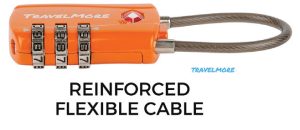 Goal: Open a locked pouch containing items to help you on your journey – A three-digit lock was used, and the required numbers could be found written on the back of three poker chips hidden throughout the escape room area. (Chip 1 was taped to the underside of the table, Chip 2 was hidden in a plastic egg and Chip 3 was hidden inside of a balloon.) Once the three digits were discovered, trial and error allowed them to open the lock.
Goal: Open a locked pouch containing items to help you on your journey – A three-digit lock was used, and the required numbers could be found written on the back of three poker chips hidden throughout the escape room area. (Chip 1 was taped to the underside of the table, Chip 2 was hidden in a plastic egg and Chip 3 was hidden inside of a balloon.) Once the three digits were discovered, trial and error allowed them to open the lock.
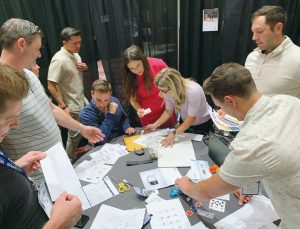
As the game advances, it is important for the teams to stay organized and realize the games build upon each other. What may not be an obvious clue initially may be a critical piece of information later in the game.
Kit 2
Goals:
-
-
- Answer 3 questions related to a product’s benefits – found on a patient poster, pinned to the escape room curtain. Each answer had a numeric value.
- Correctly line up step-by-step illustrations of a procedure – Cutouts were hidden throughout the escape room. Each step had a specific number written in invisible ink. When placed in the appropriate order, the blacklight pen would show the correct answer.
- Find and review a product video within an internal resource and note the time stamp during a specific action.
- Utilizing knowledge learned from a session during the week, determine the ideal patient for a particular procedure. (Six patient profile cards were hidden throughout the room.) The letters of the correct patient’s name had a hidden numeric value that could be deciphered using a separate key.
- Demonstrate insertion of a device through a cannulated sheath – Rolled up inside of the sheath was a made-up equation written on a piece of paper that would drop out of the sheath upon device insertion. The first four activity answers contained the numbers to be plugged into the equation. Equation: ((A+B+C+D)-(E+F))/100
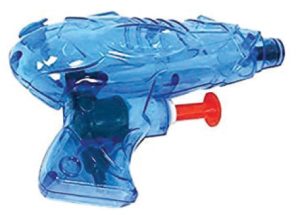 Fill a cup to the line that matches the above equation answer – A squirt gun was one of the included items planted in the pouch from kit 1.
Fill a cup to the line that matches the above equation answer – A squirt gun was one of the included items planted in the pouch from kit 1.
-
Kit 3
Goals:
 Uncover the hidden word – A poster with various numbers in different color blocks was pinned to the curtain. Some of the numbers were backwards. Using a mirror (included in the pouch from kit 1), the team could easily connect the backwards numbers on a key to spell out the word.
Uncover the hidden word – A poster with various numbers in different color blocks was pinned to the curtain. Some of the numbers were backwards. Using a mirror (included in the pouch from kit 1), the team could easily connect the backwards numbers on a key to spell out the word.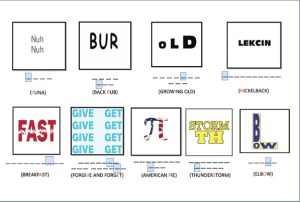 Uncover the name of one of our products through the solving of Rebus puzzles – Specific letters were highlighted and then unscrambled to find the name of the product.
Uncover the name of one of our products through the solving of Rebus puzzles – Specific letters were highlighted and then unscrambled to find the name of the product.- Uncover the name of a product using a crossword puzzle – We created a crossword puzzle related to national sales meeting session learnings. Teams had to fill in the crossword and unscramble highlighted letters to find the name of the product.
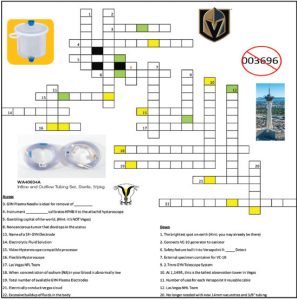
Kit 4
Goals:
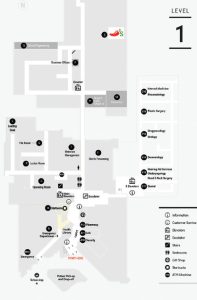 Follow the path of a rep navigating a hospital using a provided map – We created a storyline and wrote clues to lead them from room to room throughout the hospital. Each room on the map was assigned a letter and the correct path spelled out a product resource and page where they would find a hint (written in invisible ink) to the next task.
Follow the path of a rep navigating a hospital using a provided map – We created a storyline and wrote clues to lead them from room to room throughout the hospital. Each room on the map was assigned a letter and the correct path spelled out a product resource and page where they would find a hint (written in invisible ink) to the next task.- Go to the national sales meeting conference room to find the product and extract data – The invisible ink from the above activity described a conference room number and a product.
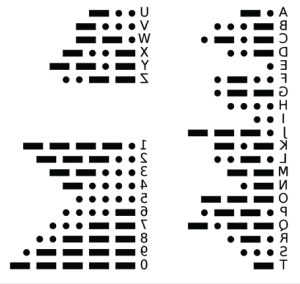 Decode a Morse code message – A backwards printed morse code key was pinned to the curtain. The mirror could be used to help decode.
Decode a Morse code message – A backwards printed morse code key was pinned to the curtain. The mirror could be used to help decode.
Kit 5
Goals:
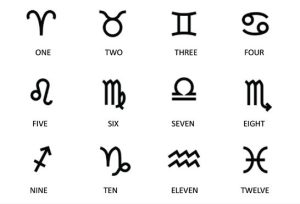 Gain access to a box bound in zip ties – A pair of scissors was secured using another three-digit lock. To find the code, they had to properly align puzzle pieces that revealed three symbols that were assigned numeric values.
Gain access to a box bound in zip ties – A pair of scissors was secured using another three-digit lock. To find the code, they had to properly align puzzle pieces that revealed three symbols that were assigned numeric values.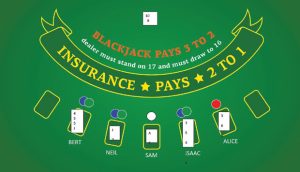 Based on given clues, lay out cards on a blackjack table in order to find three numbers associated with a specific product’s benefits. (Did we mention our national meeting was in Las Vegas?)
Based on given clues, lay out cards on a blackjack table in order to find three numbers associated with a specific product’s benefits. (Did we mention our national meeting was in Las Vegas?) Solve a riddle that will lead to a room containing the product.
Solve a riddle that will lead to a room containing the product.- Find instructions to the final activity – On the product in room 230 were instructions to take a selfie of the team holding up the final answer.
Kit 6 – Final Activity
Goal:
- Unscramble letters circled on a mosaic puzzle – Hidden throughout the room and contained in each kit were pieces needed to complete the final puzzle. On the puzzle were specific letters that were circled. When unscrambled, the circled letters spelled out: “WE ESCAPED”
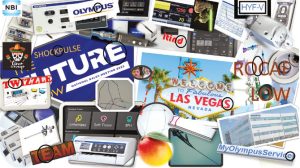 As you can see, it takes a couple of crazy people to put together a team building exercise of this magnitude. Sleepless nights, texting each other at 2 a.m. because we had an awesome idea hit us in the middle of a REM sleep cycle, 6- to 8-hour daily collaborative meetings that were only broken up with bio breaks, staring at each other in silence saying things like “I have no idea where to go from here,” and fits of punchy hysterical laughter that convinced us that we were slowly losing our minds.
As you can see, it takes a couple of crazy people to put together a team building exercise of this magnitude. Sleepless nights, texting each other at 2 a.m. because we had an awesome idea hit us in the middle of a REM sleep cycle, 6- to 8-hour daily collaborative meetings that were only broken up with bio breaks, staring at each other in silence saying things like “I have no idea where to go from here,” and fits of punchy hysterical laughter that convinced us that we were slowly losing our minds.
10 Tips
At the end of the day, we thought we would share with everyone a “behind the curtain” look at the top takeaway secrets to our success.
- Set up a plot line. We started with a fictional rep named Lenny who had been recently promoted to a territory manager and had to gather information to make a sale. Each task or puzzle was related to his journey, starting with a locked pouch that was left to him by his evil predecessor. Whenever we were stuck building out paths from puzzle to puzzle, it helped to have some sort of plot to follow. (Naming your rep also gives you someone to curse at every time you ask yourselves “why did we volunteer to do this?”)
- Work backward. Start with the end goal of what you want a learning task to be and build out the puzzle to reveal that goal. Just as in an actual escape room, there is a lot of trial and error to determine if your activity even makes sense.
- Give yourselves plenty of time to build this out. We had a hard deadline for this activity that ran parallel to simultaneously planning the overall national sales meeting (where our training team is heavily involved). With so much on our plates, we’re pretty sure this took about 10 years off our lives.
- Partner with your marketing teams for key take-aways and messaging. Understanding the key sales initiatives for the year will help set things up as your focus for the escape room goals.
- Keep the groups small. Some of our teams had more than 10 people in them, which leads to “too many cooks” syndrome. We think that six or seven people is the perfect number to avoid bloodshed.
-
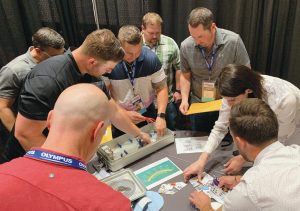
Additional products and tasks are introduced to reinforce key learnings from the sales meeting. A newly released product tray is an important part of solving this part of the activity.
Keep it around one hour. Too much time and people get fried.
- Use teasers to build excitement. During our NSM opening sessions, we told the sales force about the escape room, instructing them to keep their eyes open for clues during the first two days of the meeting. The clues we dropped were hilariously obscure and watching them run around trying to decipher them, got them super hyped up and was wildly entertaining for us.
- Stay organized. Answer keys and checklists are your best friends. Creating a facilitator’s guide will also help you keep everything on track, especially if more than one team is “escaping” at a time.
- Use themes. Because our national sales meeting was in Las Vegas, that was an easy theme to build around and helped propel the storyline forward.
- Last but not least, do dry runs. We cannot stress this enough. We had our marketing team volunteer to be our guinea pigs prior to launching to the sales force. Tasks that made perfect sense to us in the wee hours of the night made absolutely no sense to them, forcing us to pivot, rewrite or simplify.
Conclusion
As exhausting as this was to build out, we have to say that this was one of the most fun projects we’ve ever worked on. The amount of positive feedback we received from the sales force was astounding, and people are still buzzing about it.
The only downside? Figuring out how we are going to top this next year.
Deanna Gokhman, deanna.gokhman@olympus.com, and Aaron Alspack, aaron.alspach@olympus.com, are senior sales training managers for Olympus America.








